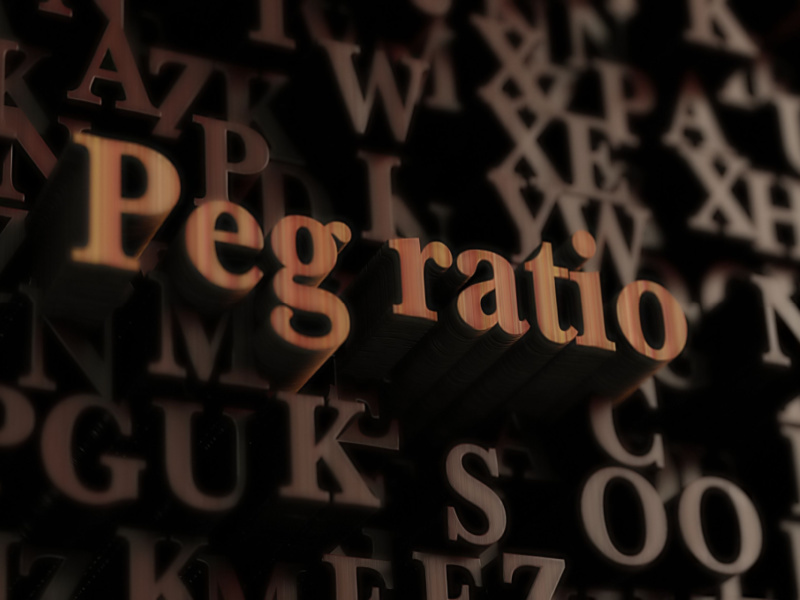
Investors who are just starting off in the stock markets often find it difficult to pick the right stocks using their basic knowledge of fundamentals. This often results in investment decisions that are based on intuition and tips. Most investors, therefore, end up losing their capital investment or get stuck for a longer period than estimated. Seasoned investors, on the other hand, carefully evaluate and analyse a stock before investing in them.
To ensure an effective investment decision, one of the key indicators that investors must consider is the Price/ Earnings to Growth ratio (PEG). Here’s a detailed look at this ratio and how to use it.
What is the PEG ratio?
The PEG ratio helps assess a company’s value by comparing its price-to-earnings ratio with the expected growth rate. Seasoned investors carefully observe the pace at which a company’s revenues and cash flows are expected to grow. The higher the pace, the more valuable the company is considered to be.
An extension of the P/E ratio, the PEG ratio helps in determining a stock’s value by considering the company’s expected earnings growth. This ratio provides a better reflection of a stock’s true value. Just like the P/E Ratio, a lower PEG ratio means that a stock is undervalued and a higher ratio indicates overvaluation.
What is a good PEG ratio?
Generally, a PEG ratio of 1.0 or below is indicative of a stock being appropriately priced or likely undervalued.
A PEG ratio of more than 1.0 means a stock is overvalued. Investors who use PEG ratio for stock selection must verify whether the stock’s P/E ratio is equal to or lower than the expected growth rate.
How is PEG ratio calculated?
The formula for PEG ratio is:
PEG ratio = P/E / earnings per share (EPS) growth rate
This calculation requires investors to first estimate the P/E ratio, stock’s EPS and EPS growth rate. Here are the formulae:
P/E ratio = stock price/ EPS
EPS = Net income – Preferred dividend/Outstanding shares
EPS growth rate = (prior year EPS – current year EPS)/prior year EPS*100
Let’s understand the PEG calculation with the help of an example:
Here is Company ABC’s data for current and previous financial year:
Current year earnings = Rs. 15 lakhs
Market price of stock = Rs. 15
Total outstanding shares = 2 lakhs
EPS growth rate prior-year = 3%
EPS growth rate current year = 3.5%
EPS = (15,00,000/1,00,000) = 7.5
P/E ratio = 15/7.5 = 2
PEG ratio = 2/3.5 = 0.57
How to use PEG ratio for investment decisions?
PEG ratio mainly adds the element of earnings growth to the Price/Earnings ratio. This helps investors effectively understand whether a stock is undervalued or overvalued. Using this ratio, investors can determine the right entry and exit points for a stock.
Short-term investors may prefer investing in a stock that is about to see a sharp rise. Therefore, a stock with a PEG of less than one would be ideal. However, while using PEG to check if a stock is undervalued or overvalued, one must remember that this could vary across company and industry types.
Limitations of PEG ratio
Just like any ratio analysis, the PEG ratio also has its limitations. Listed here are some of them:
- PEG ratio cannot be used for evaluating companies that have reported losses since it’s not possible to compute the PEs of such companies.
- If investors calculate PEG ratio using the projected earnings of a company, they must also know the authenticity of the projected earnings since the ratio can give inaccurate results if the projections are not as per actuals.
- This ratio cannot be used in certain sectors, like real estate, airlines, etc. This is because such companies need to be valued as per their asset values.
- Growth companies may have good PEG ratios and investors may be tempted to enter such stocks. However, the question to ask in this case is, how much does an investor need to pay towards the growth.
- This ratio mostly works while comparing similar companies as far as growth is concerned.
Considering the limited perspective that a PEG ratio may offer without looking at the uncertainties surrounding any company’s growth, investors must use this ratio as one of the many metrics while evaluating the investment.
Conclusion
The PEG ratio offers meaningful insight as compared to using the P/E ratio alone. By incorporating growth in the calculation, the PEG ratio allows investors to weigh a company’s stock price vis-à-vis its potential for growing its future earnings. While benefiting investors, the PEG ratio also adds an element of uncertainty since the calculation requires future growth to be estimated. Thus, the PEG ratio can add value to analysis, but it should be used as an enhancer to fundamental analysis and not stand-alone.
FAQs
Both fundamental and technical analysis aid enhanced decision-making in stock market investments. Fundamental analysis is mostly used by long-term investors who prefer to rely on company financials rather than market patterns. Technical analysis is preferred by short-term investors who monitor stock price performance for investment decisions.
Some of the financial ratios used by investors for stock investment decision-making are earnings per share, price to earnings, debt to equity, and return on equity.
Yes, PEG ratio can help in taking long-term investment decisions since it uses the projected growth rate of the company’s earnings. Hence, for the projections to materialise, one must stay invested in the stock for a longer period.
Yes, short-term investors can use fundamental analysis to identify the right stocks and limit their portfolio risk.
Investors use the P/E ratio to determine a stock’s market value vis-à-vis the company’s earnings. The ratio tells investors whether the market is ready to pay for a stock today basis its past or future earnings. In simple words, the ratio tells investors whether a stock is under or overvalued.




















